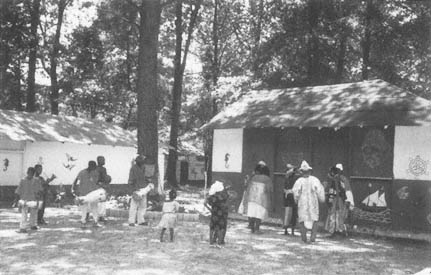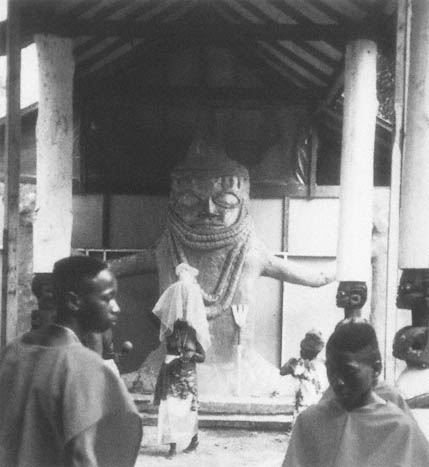another the mirrors, the twins, the binary divination of Ifa, reincarnation, all led back to what seemed the simplest metaphor of all: the crossroads.
|
In voudou, not unlike Native American and Asian religions, the plane of existence is really a dual bisectionliterally, a cross of horizontal and vertical axes. The horizontal delineates the living (above) from the dead (below). The vertical line separates the life cycle in the way of a clock, from re-birth at midnight, around clockwise and back to the midnight of the instant of death. In the classic Haitian vodun vêve (symbolic drawing), the crossroads icon is depicted as a cross surrounded by a circle. The cross interstices mark the inseparable dualities, and the circle indicates the movement of the time-space continuum. The crossroads are not only mirrors within voudou, but outward, to the rest of the world as well.
|
But I was noticing something else in Oshun's mirrorscracks. I didn't know why until a few days later when, on a quiet afternoon, I heard pecking and walked down to the shrine. Her birds, the peacocks, were compelled by their own reflections to break the mirrors into shards. Blood tracks from their lacerated foot pads speckled the dirt. One of the villagers told me that keeping mirrors in stock was a real problem, as was protecting the birds from self-inflicted wounds, but what could anyone do? If Oshun, taking the form of the peacocks, wanted to shatter the illusion of her own image to see what lay behind, who would stop her?
|
The procession, meanwhile, had reached the shrine of its namesake. A blue and white wooden hut about the size of a snow-cone booth at the state fair, it contained, under lock and key, the secret worship pots, or superas. Liberally decorated with drawings of seahorses and other ocean life, the hut opened onto the village's largest ceremonial courtyard, a white sandy area big enough for a half-court basketball game, flanked on one side by a section of bleachers for spectators, such as there were.
|
|


